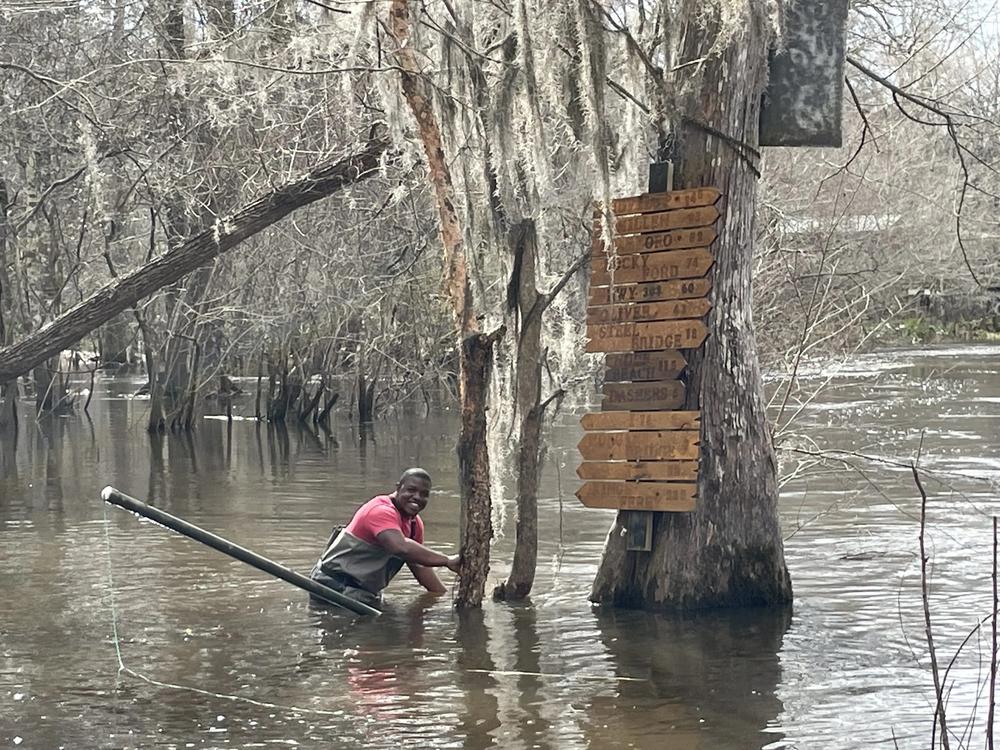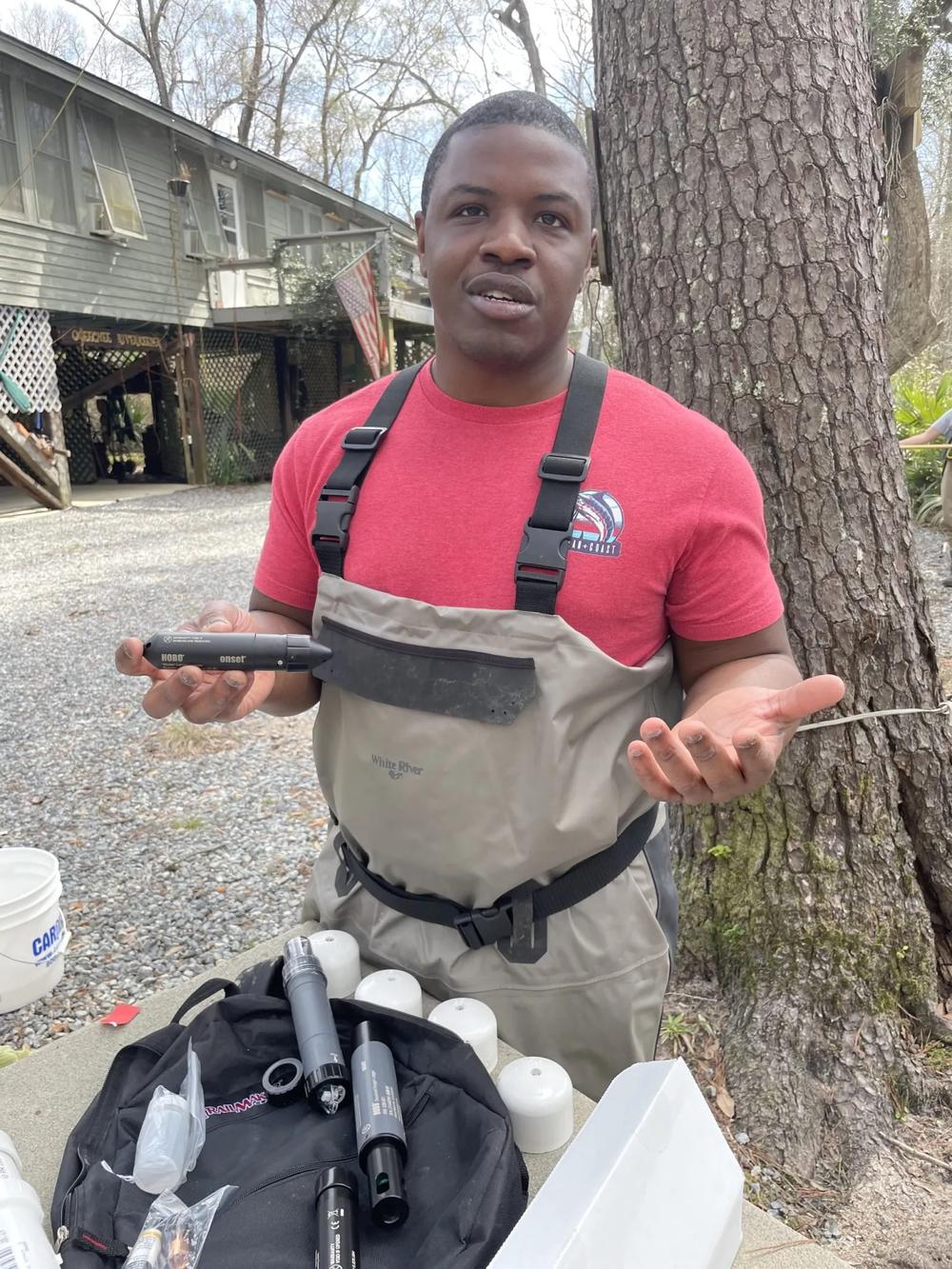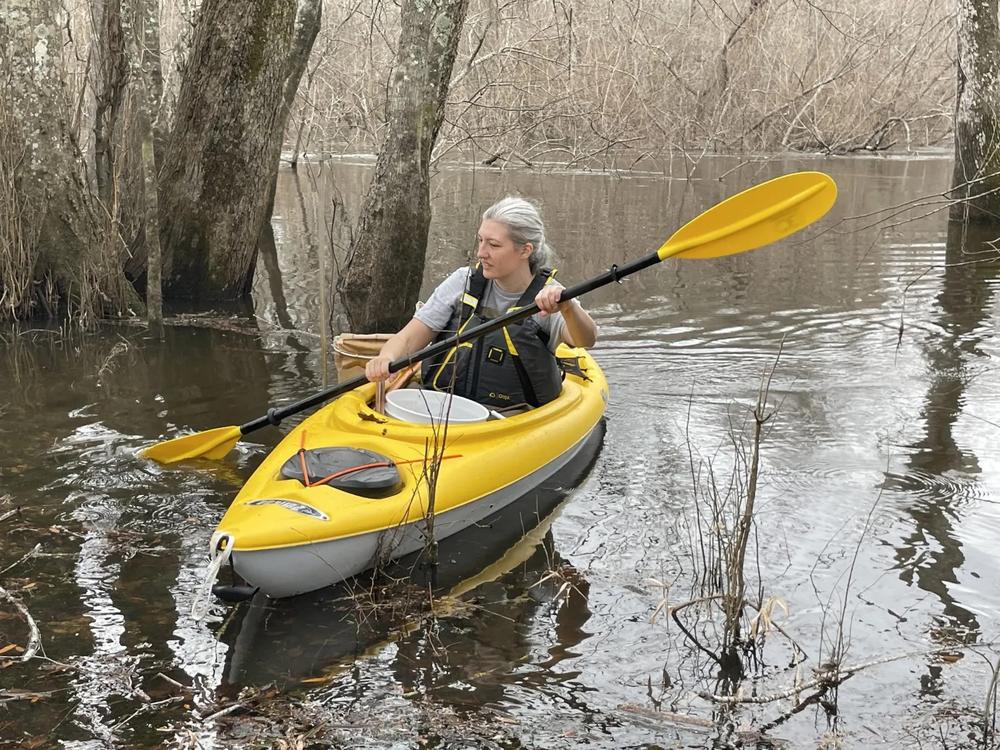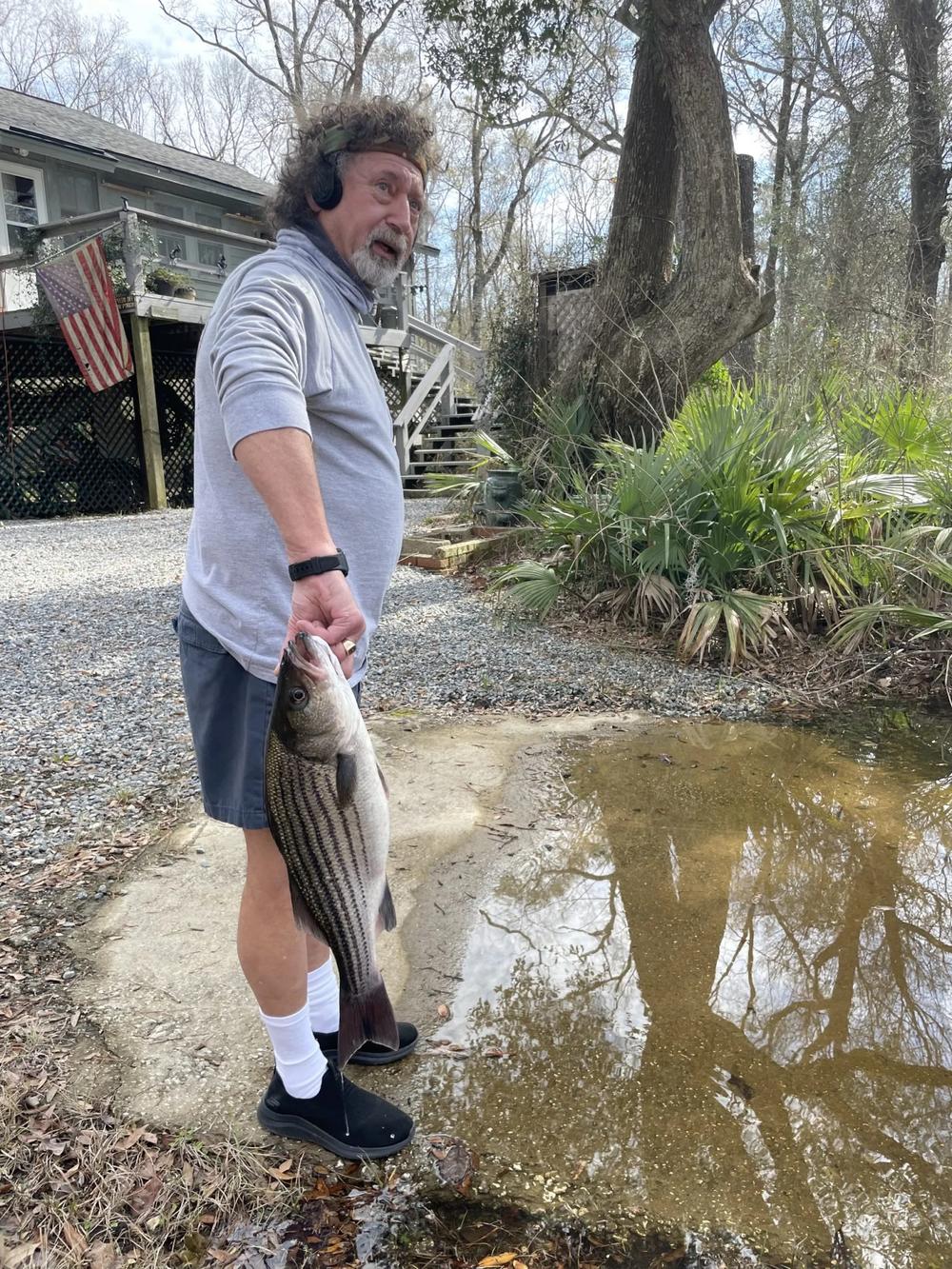
Caption
Ogeechee Riverkeeper Science and Policy Manager Kris Howard sets up a water quality monitoring station in the Ogeechee River.
Credit: Mary Landers / The Current

Ogeechee Riverkeeper Science and Policy Manager Kris Howard sets up a water quality monitoring station in the Ogeechee River.
Electric vehicle production at the $5.5 billion Hyundai factory in Bryan County is still several years away, but the Ogeechee Riverkeeper is already preparing to protect the river from its effects.
On Thursday the organization’s science and policy manager, Kris Howard, deployed the first of three new water quality monitoring stations in the river basin. The idea is to establish the river’s baseline qualities, pre-Hyundai factory and pre-Hyundai growth.
“We have them set for taking measurements every hour, just to get a good baseline,” Howard said as he popped each of four tubular monitors into a homemade holder made of PVC pipe. “This one does conductivity, so your salts in the water.”
The other monitors measure pH, temperature and dissolved oxygen.
The Ogeechee Riverkeeper is doing the monitoring because director Damon Mullis doesn’t trust state regulators at the Georgia Environmental Protection Division to do it.
“When you hear Georgia is the best place to do business, that’s always what I think about. I always think about the lax environment.” — Ogeechee Riverkeeper Damon Mullis
“EPD operates like customer service representatives for industry. I mean, they really do. I’ve seen it firsthand,” he said. “When you hear Georgia is the best place to do business, that’s always what I think about. I always think about the lax environment. I know that there’s more to it than that. It’s cheap labor, it’s this, that or another, but one thing is, they can locate here and get relaxed environmental permits.”
With his waders on Thursday, Howard slipped into the dark, swollen river. His destination: a cypress tree that normally anchors the bank. But it had been raining and the river was up about three feet and still rising. He hung the monitors on a pole by the tree. He’ll be back about once a month to download their data.

Research fellow Molly McKeon paddles in from sampling invertebrates on the Ogeechee.
Board member Jody Slater lives in the riverfront home here, just steps from the water. It’s about a mile and a half downstream from the planned outfall from the under-construction wastewater treatment facility, a distance that will allow the river water and sewage outfall to be well mixed by the time it gets here. And thanks to Slater, there’s easy access to the monitors from the land.
Bryan County’s new wastewater treatment plant will treat sewage from homes as well as pre-treated wastewater from the Hyundai plant. A recent ad for a new director of the Bryan County water and sewer department boasted that planned improvements in the county by 2024 will total $300 million in infrastructure investment for water and sewer. Mullis said the plans look good so far, but his organization will be keeping watch just to be safe.
This section of the river where the riverkeeper’s monitors sit has no warnings for any water quality impairment.

Research fellow Molly McKeon paddles in from sampling invertebrates on the Ogeechee.
The river suffered a large fish kill in 2011 that was linked to the King America Finishing textile factory. That company’s successor, Milliken, continued to have difficulty meeting the requirements of its permits and was fined repeatedly. It announced its closure last summer. Manufacturing ceased but the company is still evacuating its treatment ponds, a process that should conclude over the next few months, Mullis said. No other large manufacturer discharges into the Ogeechee, a free-flowing blackwater river. The timing of Milliken’s exit allows for a baseline free of its pollution.
The riverkeeper plans another monitoring station above the wastewater treatment outfall on the river and a third one to monitor stormwater runoff from the massive Hyundai plant into Black Creek, a major tributary of the Ogeechee. Much of the site, which at 3,000 acres is about the size of Tybee Island, will be covered in pavement or buildings that won’t allow rain to soak in.
Research fellow Molly McKeon is getting a baseline assessment of macroinvertebrates, some of the river’s tiniest inhabitants. These include mud dwellers like caddis flies and aquatic “roly polies,” or what fishermen call scuds. The abundance and diversity of these creatures at the base of the food web can help assess a river’s health. McKeon tried to collect samples Thursday but the high water made it difficult. She vowed to return in April.

Ogeechee Riverkeeper Board Member Jody Slater lives on the riverfront.
Slater, a retired school teacher, grew up swimming and fishing in the Ogeechee. He bought his stilt house in the late 1990s, just in time for the biggest flood of recent memory. After the fish kill of 2011, he reached a settlement with King America Finishing, Milliken’s predecessor. That’s when he said goodbye to teaching and began spending more time fishing. He pulled a 6-pound striped bass out of the river Thursday just before his visitors arrived.
He was already nervous about the county’s growth surge. He counts the distance to the I-16 bridge in terms of the river’s curves. It’s eight bends away from his place.
“Right now it’s just as quiet as can be,” he said. “But you can hear it when the river is up higher and all these leaves are gone. You think you can hear people talking or laughing in the car when they go by on the bridge, the way the sound carries.”
This story comes to GPB through a reporting partnership with The Current.